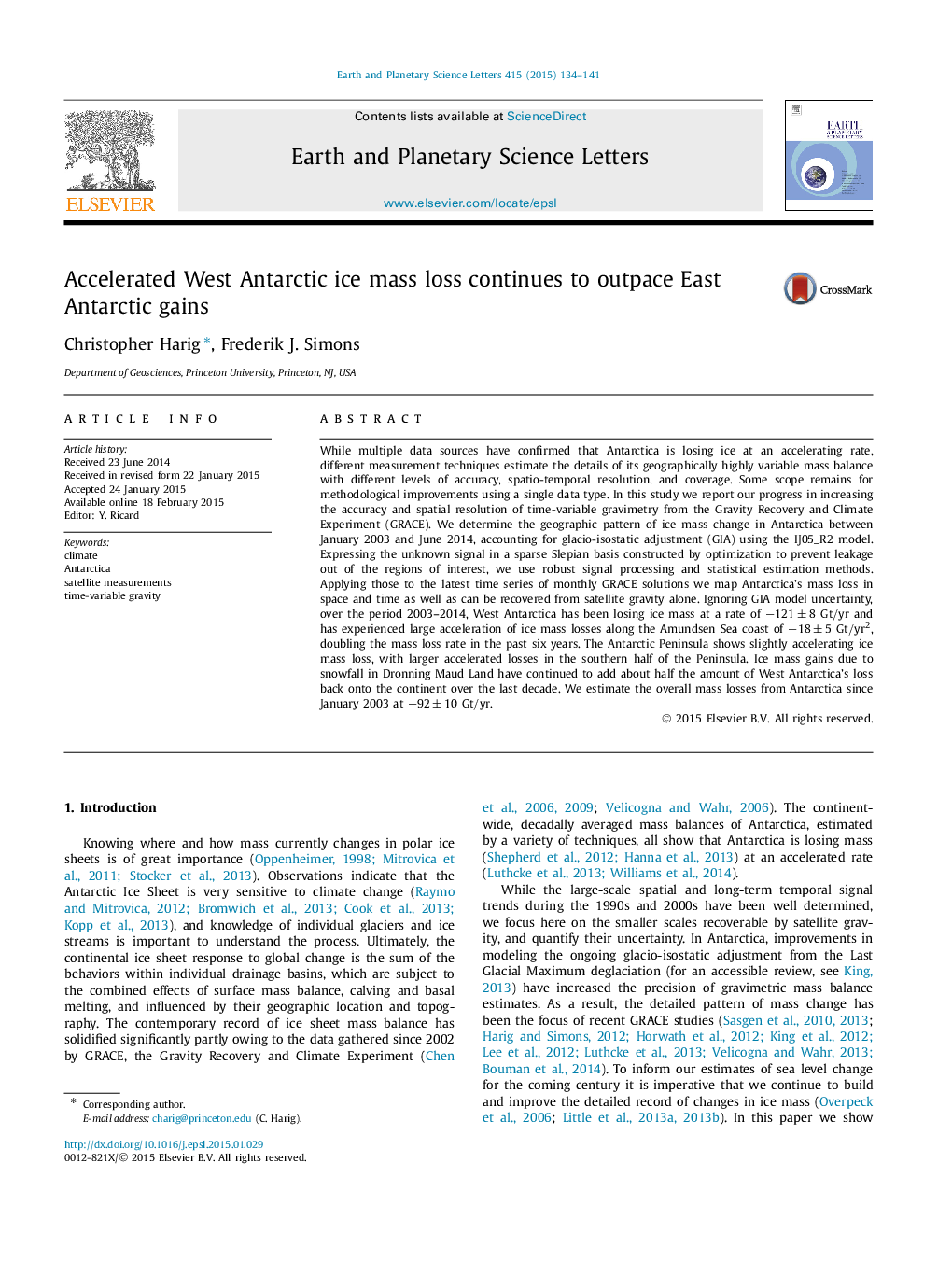| Article ID | Journal | Published Year | Pages | File Type |
|---|---|---|---|---|
| 6428545 | Earth and Planetary Science Letters | 2015 | 8 Pages |
â¢A decade of time-variable gravity observations details Antarctic ice melting.â¢Slepian-function analysis reduces footprint of satellite-gravity based approaches.â¢Localized estimation approach dramatically reduces number of degrees of freedom.â¢We robustly resolve detailed patterns of ice melting using GRACE data products.â¢Glacio-isostatic adjustment models affect trends, not patterns or accelerations.
While multiple data sources have confirmed that Antarctica is losing ice at an accelerating rate, different measurement techniques estimate the details of its geographically highly variable mass balance with different levels of accuracy, spatio-temporal resolution, and coverage. Some scope remains for methodological improvements using a single data type. In this study we report our progress in increasing the accuracy and spatial resolution of time-variable gravimetry from the Gravity Recovery and Climate Experiment (GRACE). We determine the geographic pattern of ice mass change in Antarctica between Januaryâ 2003 and Juneâ 2014, accounting for glacio-isostatic adjustment (GIA) using the IJ05_R2 model. Expressing the unknown signal in a sparse Slepian basis constructed by optimization to prevent leakage out of the regions of interest, we use robust signal processing and statistical estimation methods. Applying those to the latest time series of monthly GRACE solutions we map Antarctica's mass loss in space and time as well as can be recovered from satellite gravity alone. Ignoring GIA model uncertainty, over the period 2003-2014, West Antarctica has been losing ice mass at a rate of â121±8Gt/yr and has experienced large acceleration of ice mass losses along the Amundsen Sea coast of â18±5Gt/yr2, doubling the mass loss rate in the past six years. The Antarctic Peninsula shows slightly accelerating ice mass loss, with larger accelerated losses in the southern half of the Peninsula. Ice mass gains due to snowfall in Dronning Maud Land have continued to add about half the amount of West Antarctica's loss back onto the continent over the last decade. We estimate the overall mass losses from Antarctica since January 2003 at â92±10Gt/yr.
